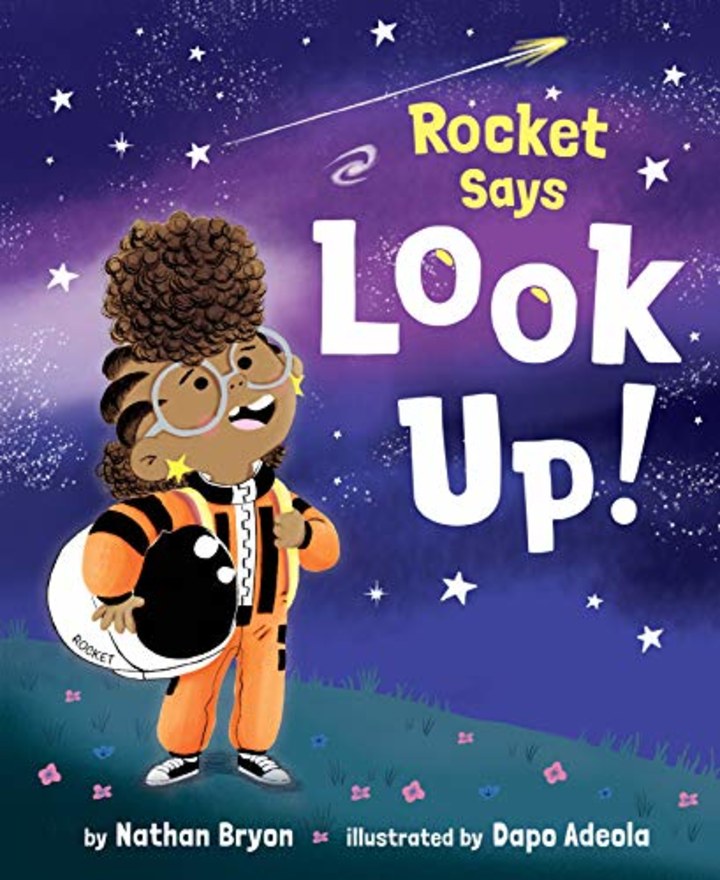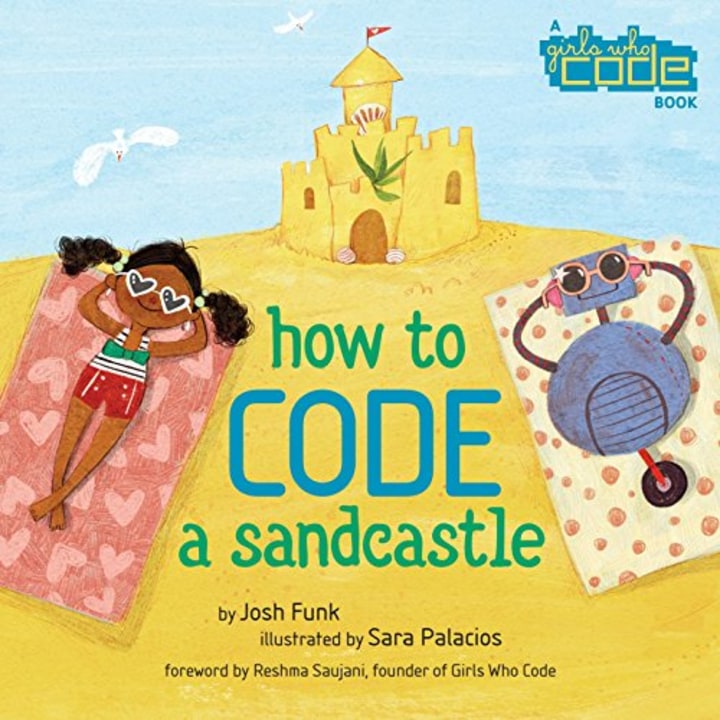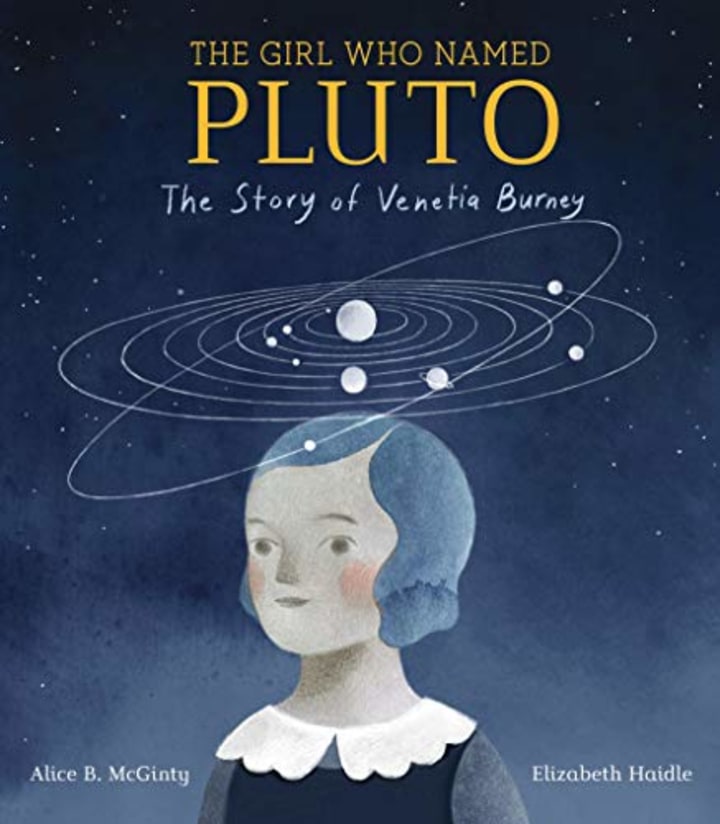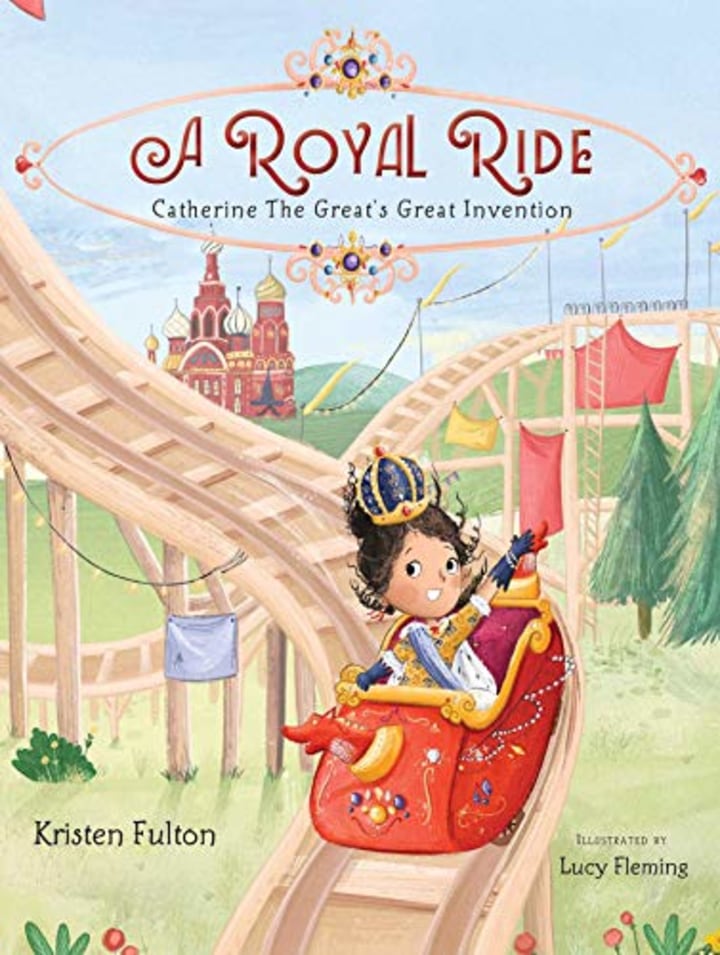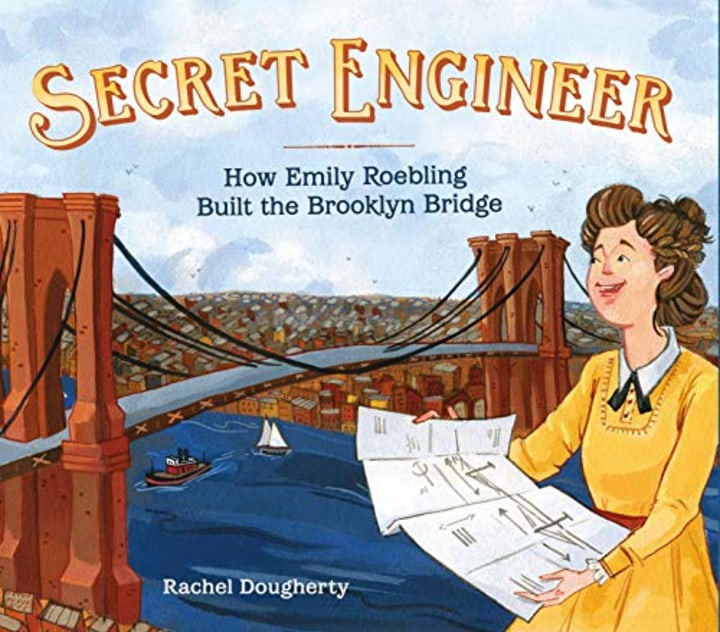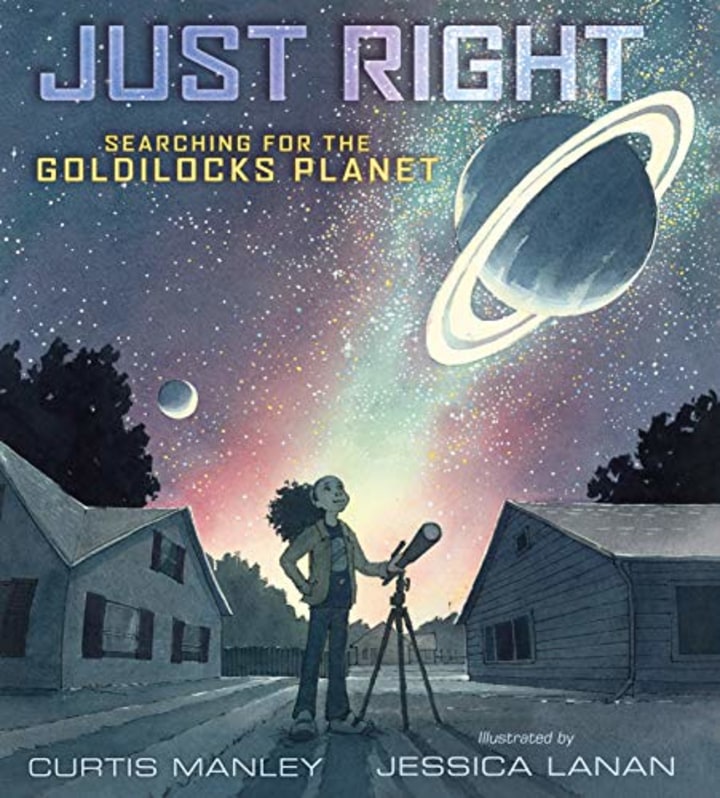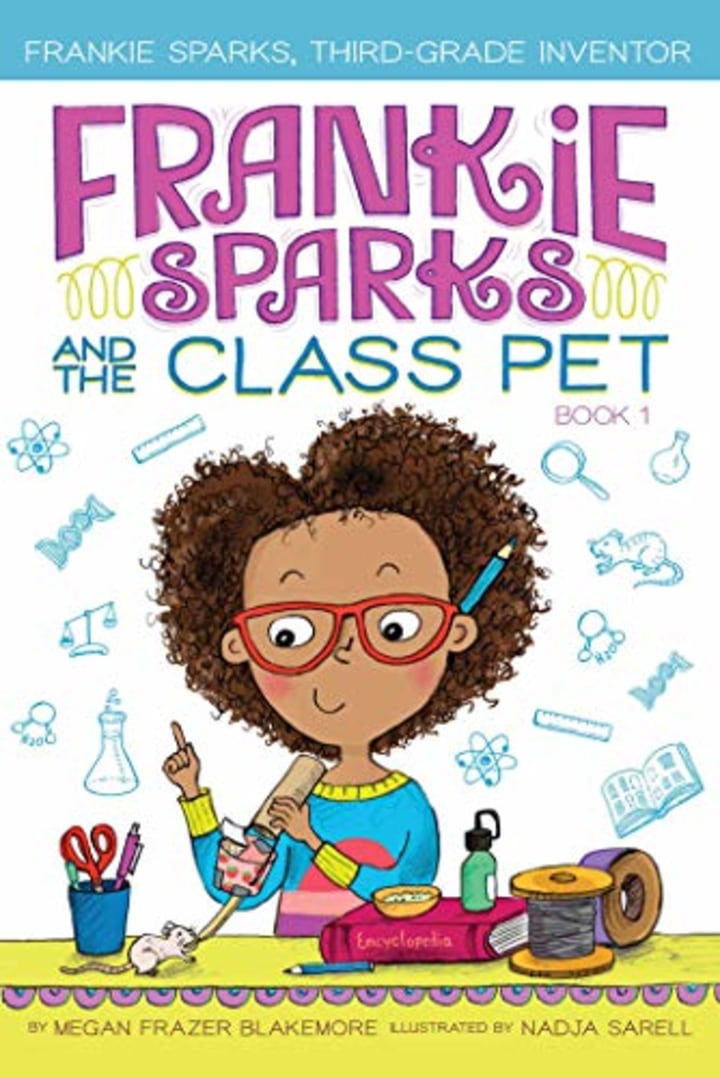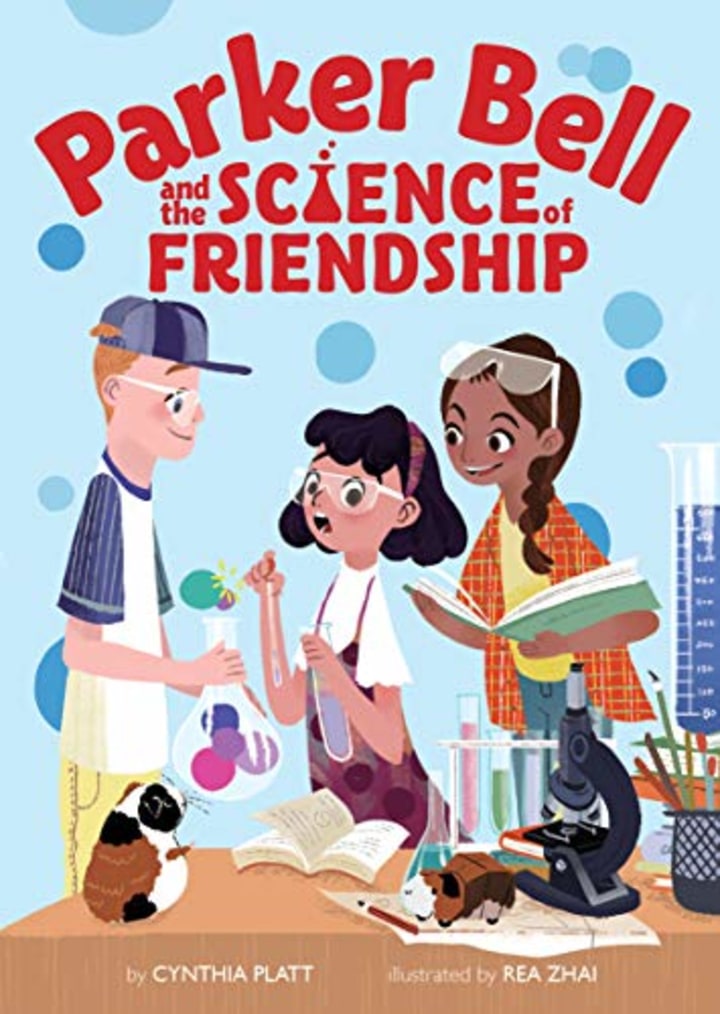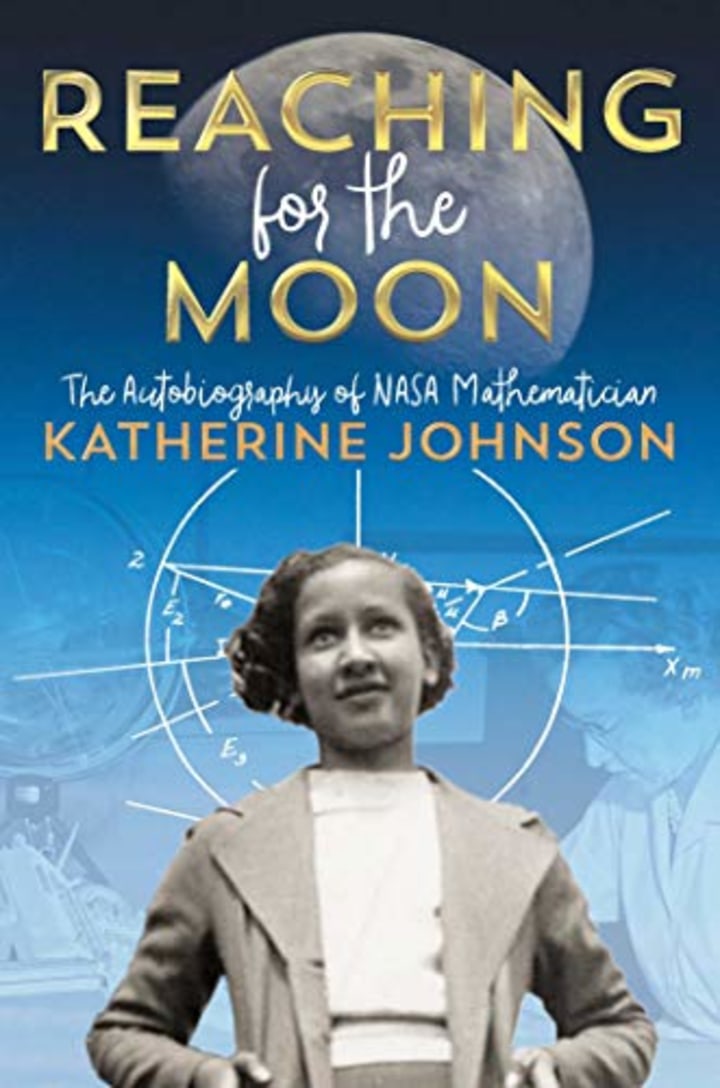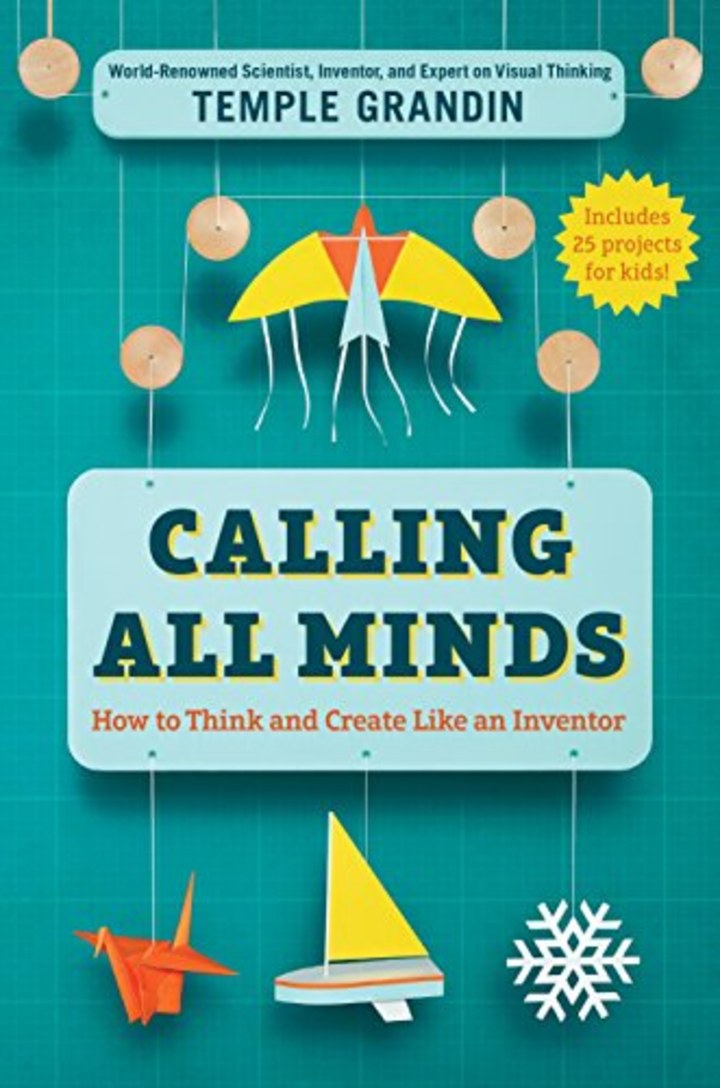There’s no question that STEM (science, technology, engineering and math) plays a critical role in any child’s education. And one of the easiest and most effective ways to expose kids to and get them interested in STEM is through reading.
Do you want to learn about influential figures in science and math? Are you eager to introduce coding to your little ones? Do you have a child who loves building and inventing? Are you trying to find a relatable STEM-loving character? Whatever you or your kids are looking for, there’s a book for that. Check out some of my favorite picks for getting and staying excited about STEM!
Know Your Value editors, writers and experts take care to recommend items we really like and hope you’ll enjoy! Just so you know, Know Your Value does have affiliate relationships. So, while every product is independently selected, if you buy something through our links, we may get a small share of the revenue.
Recommended age: 3-7 years old
Read this if ... you’re always looking up at the stars.
In a nutshell: Rocket loves science and everything space-related. So when she hears that there is going to be a meteor shower, she knows she’s got her next mission. She spreads the word and gathers friends and neighbors together for a viewing. She even manages to drag along her older brother, who's always looking at his phone. Things don't go exactly as planned, but in the end, she and her brother — who finally looks up! — share the wonder of the night sky.
Why I love it: Rocket is my kind of character — smart, creative, ambitious and totally loveable. Readers will be delighted and inspired by Rocket's passion for science and space and love learning about meteors and comets right along with her.
Favorite quote: “All I know is that one day I’m going to be the greatest astronaut, star catcher, space walker who has ever lived — like Mae Jemison, the first African American woman in space.”
Recommended age: 4-8 years old
Read this if ... you want an engaging, funny and fun picture book to expose your kids to coding.
In a nutshell: It’s the last day of summer, and Pearl is determined to build a sandcastle. She’s been trying all summer, but one thing after another has gotten in her way. Today, though, she’s got a new plan. She’s brought her trusty robot Pascal, and they’re going to code their way to getting the job done! As she and Pascal set about to build, Pearl she learns that she can’t just tell Pascal to build a sandcastle — she has to break down each step to create a code that will work properly. Pearl problem-solves her way through the day, and in the end, her sandcastle — or rather, sand kingdom — is perfect.
Why I love it: This book teaches actual coding concepts — my 3-year-old daughter now knows what a coding loop is! Oh yeah, and the next book in the series, "How to Code a Rollercoaster," is out next month.
Favorite quote: “[A] coder takes one big problem and breaks it into several smaller ones. If I give Pascal enough instructions that he does know, we’ll build this castle in no time!”
Recommended age: 4-8 years old
Read this if ... you’ve ever wondered how Pluto got its name!
In a nutshell: It’s 1930 and 11-year-old Venetia Burney has been learning about the planets in school. She can’t get enough! She loves it so much that she continues learning after school through lengthy conversations with her grandfather, who happens to be the head librarian at the University of Oxford. When Venetia hears that a new planet has been discovered — and that it hasn’t yet been named — her imagination takes flight, and before she knows it, she’s come up with the perfect name: Pluto. Her grandfather is so enamored with the name that he sends a note to his friend at the Royal Astronomical Society passing along Venetia’s suggestion. And the rest, of course, is history.
Why I love it: Venetia didn’t only love science and space, she also loved Greek and Roman mythology. It was actually her love of the two that led her to the perfect name.
Favorite quote: “There it is, that icy sphere, spinning 3.67 billion miles from the sun, many paces past Neptune — and its name is Pluto.”
Recommended age: 4-8 years old
Read this if ... if you want to hear the incredible true story of how roller coasters were invented.
In a nutshell: In the mid 1750s, ice slides were all the rage in Russia. Can you imagine the fun? It was splendid! That is, until spring came, and the ice would melt. Catherine the Great, Empress of Russia, was disappointed just like everyone else. So she decided to do something about it! She set out to invent a device that would allow them all to have fun in spring and summer, too. Drawing sketches and designs, she instructed her royal builders to build her invention. She didn’t know it at the time, but her royal ride would eventually become known as the world’s first roller coaster.
Why I love it: Catherine the Great may have been an empress, but she did something that any kid can be inspired to do. She saw a problem, and invented a solution — fabulous!
Favorite quote: “[Catherine] wanted to sail through the air and she didn’t want to wait until winter. There had to be a way to soar in the sun.”
Recommended age: 5-8 years old
Read this if ... you’re curious about how bridges like the Brooklyn Bridge are built!
In a nutshell: Emily Roebling loved learning. At a time when girls were discouraged from studying subjects like math and engineering, Emily did anyway. She didn’t know how well it would serve her. Years later, she married Washington Roebling, the son of a well-known bridge engineer who soon began work on building a bridge between Manhattan and Brooklyn. Emily insisted on staying at her husband’s side while he studied the latest in bridge-building techniques. When the terrible “cassion sickness” befell Washington, causing him to lose both his mobility and, slowly, his sight, Emily stood in for him. Studying bridge engineering and design, Emily kept learning and managed the construction in Washington’s stead, making sure the bridge was successfully and safely completed.
Why I love it: Along with the story of the incredible woman behind the construction of the Brooklyn Bridge, it’s fantastic that the book also actually walks through engineering terms and the mechanics of bridge-building.
Favorite quote: “Crowds gathered on both riverbanks, and on boats in between, to celebrate the great feat of engineering - never even knowing about the contributions of an insistent woman named Emily Roebling.”
Recommended age: 5-9 years old
Read this if ... you’ve ever looked into the night sky and wondered whether anyone was looking back.
In a nutshell: We know the Earth is special. It’s the only planet that we know of that has life. But what if there was something else out there? This awesome story follows a little girl as she explores this question and much more. Packed with facts about the Earth, our universe and the tools we have for exploring it, this is a really, really cool addition to your STEM collection.
Why I love it: In addition to it being visually stunning, I love that this book is so versatile. You can read it at bedtime, or pick up when you want to explore more facts. Younger kids will love the gorgeous illustrations and the little girl, and older ones will love all the details about our amazing universe.
Favorite quote: “So far we still seem to be alone in the universe. But as telescopes get bigger and better, and as we watch more and more stars, the changes of finding life improve. What might that life be like?”
Recommended age: 6-11 years old
Read this if ... you’ve ever had — or wanted — a class pet.
In a nutshell: Frankie’s teacher has just announced that they are getting a class pet, and that the class gets to decide which pet to get! The class will research various potential animals, make presentations to the class, and then vote. Frankie is beside herself, mostly because she already knows exactly which animal they should get — a rat! But not everyone agrees that a rat is the best pet for their class, including her best friend, Maya. Frankie gets to work in her inventing lab, using her love of science and math to invent the necessary tools and create a presentation that is sure to win everyone over. But when Frankie’s enthusiasm for her project starts to interfere with her friendship, she comes to realize that maybe being right isn’t always the most important thing.
Why I love it: Frankie is such a lovable character. She’s got loads of enthusiasm and passion for what she loves, but readers will also feel for (and relate to!) her when she makes mistakes. Early middle graders will surely fall in love with Frankie like I did. And this one’s a series, too!
Favorite quote: “Frankie Sparks, you are a problem solver, she told herself.”
Recommended age: 7-10 years old
Read this if ... you want a great middle-grade read about a science-loving kid.
In a nutshell: Parker Bell’s life is pretty great — and it’s all thanks to science. Parker’s heroes, Mae Jemison and Jane Goodall are her constant and trusty advisers (from their posters on the wall in her bedroom), and she uses science (and math) to inform everything in her life, from her friendship with her very best friend, Cassie to where to sit on the bus to what she’s going to wear the next day to school. But when Parker and Cassie are paired with another kid, Theo, in class for the Science Triathalon, things are definitely thrown out of whack. Now Parker has to figure out if science can help her make a new friend (and keep her old one)!
Why I love it: Parker makes science and inventing so fun that after reading this book, any kid will be itching to set up their own mad science lab and start building things, too!
Favorite quote: “Parker Bell loved science. One day, she hoped to be a world-famous scientist, making important discoveries and engineering robots to help people do amazing and exciting things But first, she had to finish going to Eleanor Roosevelt Elementary School.”
Recommended age: 10 years old and up
Read this if ... you want to introduce your math-loving kids to an incredible role model.
In a nutshell: Katherine Johnson had a gift for math. Despite growing up in a time when racism and sexism ran rampant, Katherine was fortunate — her parents encouraged and supported her to use her gift and her talents. Eventually, these gifts landed her a job at (what is now known as) NASA, where she worked on major projects like sending the first astronauts to the moon. Filled with historical context, Johnson’s autobiography gives readers an inside look into her extraordinary journey.
Why I love it: Before this book, I knew about Katherine Johnson —I’d see "Hidden Figures," and read several books about her. But there is just nothing like reading someone’s story in their own words. Johnson’s easy and relatable voice made this book not only inspirational but also fabulous to read.
Favorite quote: “By then, I’d really grown to love math — its simplicity, its elegance, how in a world rife with the danger of racism and economic uncertainty, it provided clear-cut answers: either you were right or you were wrong.”
Recommended age: 8-12 years old
Read this if ... you want a book to inspire young engineers and inventors to change the world.
In a nutshell: You don’t have to be familiar with inventor, professor and autism spokesperson Temple Grandin to love this book, but if you are, you’ll love it even more. Grandin’s own experience as an inventor guides the story as she walks readers through different kinds of inventions throughout the ages, encouraging readers make their own invention or creation that will make the world a better place. Each chapter includes maker activities that kids can do themselves, making it both informative and interactive.
Why I love it: I love that this truly is a call to action for ALL kids. Grandin knows better than many that not all minds are alike, so she stresses the importance of imagination, creativity, and open-mindedness in creating.
Favorite quote: “The future holds many crucial challenges such as understanding the impact of climate change, curing diseases, and ending hunger. We need all kinds of minds if we are going to figure out how to adapt. If we lose the ability to make things, we will lose a whole lot more. We need people who can cast iron and chemists who can create new materials that are lighter and stronger than metal. We need new storytellers, filmmakers, musicians, and artists. And we need new technologies to explore the future, including a deeper and more complex understanding of the earth and the ocean and the galaxies.”

